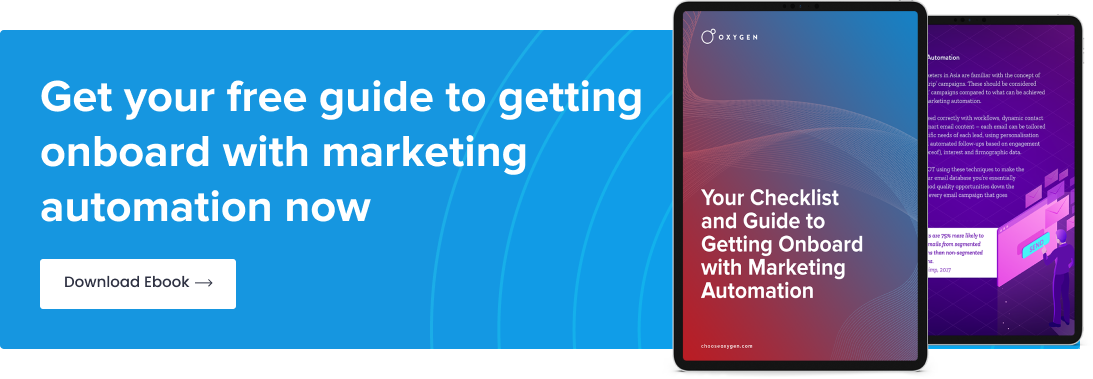Over the years we’ve seen a number of different CRM implementations using a range of different CRM software such as Salesforce, HubSpot, Microsoft Dynamics, SAP and Zoho as well as a number of custom CRM implementations serving a number of different industry niches.
We’ve seen the good, the bad, and the ‘you might as well be communicating to your customers in smoke signals for all the good this sales software is doing for your business’.
In the cases where the CRM implementation is a business cost, rather than a sales enablement tool, it usually boils down to one or more of the same three issues we see cropping up time and time again.
In this 3-part 'Global CRM Strategy' blog series, we will take you through each of these issues, through the lens of three real-life cases where the CRM strategy goes awry – equipping you with the tools and techniques to avoid making the same mistakes.
CRM Case Study A: The Right Intentions, The Wrong CRM
Company A, a large MNC in the manufacturing sector successfully used CRM A for 2 years in Asia for both marketing and sales. CRM A is a popular SAAS CRM bundled with marketing automation tools on top. Revenue, deal size, the time taken to close a deal, lead sources and the best-performing salespeople were all clear and measurable.
In the 3rd year, Company A switched to CRM B based on a recommendation from the global CTO in the US who was familiar with CRM B – sales and marketing in Asia were not consulted. CRM B was a hosted, enterprise solution that was more powerful, more customisable and came with more advanced permissions compared to CRM A.
However, CRM B was practically unusable for the local marketing and sales teams, frequently crashing and requiring additional full-time developers to operate. The sales and marketing performance was impossible to measure for several months, with the final result being lower local employee satisfaction, much higher CRM operating costs and sales revenue below expectations for that year.
In Case Study A, CRM A was successfully being used by the local marketing and sales teams with measurable results. The global CTO based their decision to a switch CRM (that was already working well) on technological familiarity and didn’t think about how this may affect the people that are actually successfully using the system already, or how it would affect the bottom line of the business.
Simply talking to all of the key stakeholders in marketing and sales that were using CRM A, asking what they liked about it, why it was working well and evaluating what new training and maintenance costs that may be required with software B may have saved a lot of money.
CRM Technology Choices in Hong Kong
From our observations (in Hong Kong in particular) due to CRM software usually coming under the “IT & Software Costs” revenue line, we often see that either CTO (or related technical roles), or in some cases the CFO, have complete autonomy over the purchasing decision for CRMs and marketing automation software.
Of course, technical input is valuable, however, the CRM is fundamentally a sales tool (that is frequently used by both marketing and services) – it doesn’t make sense not to give these stakeholders a seat at the table.
As a case in point, we sometimes see more expensive technologies like Microsoft and SAP selected in situations where the sales team is relatively small and unsophisticated – a permission-heavy, enterprise-level CRM isn’t warranted in this case. The selection is often based on the fact that CTO has used that vendor before and has developers in-house on other projects that were familiar with the underlying technology.
If you are reading this as a technical decision maker, or have always been a ‘Microsoft shop’ internally, this certainly isn’t to say that Microsoft or SAP are bad tools. Technologies all have their pros and cons when in different situations and different operating environments. Similarly costly mistakes could have been made by selecting a lightweight CRM tool in a truly enterprise environment with a large sales team.
The key point here is that by making a CRM technology decision based solely on technological familiarity or because other business units use the same vendor is unwise. These factors are important, but should only form part of the decision-making process.
As a technical decisions maker, by consulting sales and marketing, you are more likely to implement a solution that gets internal buy-in from the off and ultimately delivers results in the end. Conversely, without consulting technical decision makers, heads of marketing and sales may lack a technical perspective in the final decision-making process.
5 CRM Technology Change Tips

So, how do you involve the right people and get the decision right the first time?
Some actionable items that could have prevented the issues outlined in Case Study A include (but are not limited to):
- Surveying all CRM users on qualitative satisfaction with the existing CRM.
- Conducting follow-up interviews with key stakeholders and CRM users.
- Conducting a quantitative performance analysis of the existing CRM – is it doing what we expected it to and what we need it to? If it was architected well it should be very easy to see the bottom line. If it wasn’t then this is an opportunity to revisit the sales process architecture.
- Conducting a performance analysis on the potential of the new CRM, comparing existing and new features against the desired (and hopefully optimum) CRM architecture.
- Conducting a risk analysis on the new CRM looking at the potential training costs and ramp-up, the need for 3rd party vendor support, hosting and maintenance costs / SAAS costs, and any additional technical staff required.
Lesson 2 of 3: A successful global CRM
strategy requires "thinking locally"
Still unsure which CRM platform is right for you? Speak with a local marketing specialist to learn more about your options.


